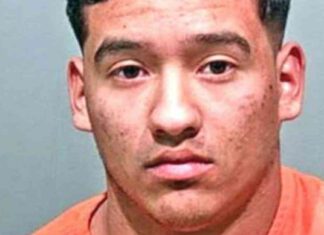The report on mobility in Quebec from CDPQ Infra will be revealed to journalists this Wednesday. But it has already been presented to the government and to the mayors of Quebec and Lévis. Its contents are already widely known. The Caisse will recommend a tram for the capital. The ideal route according to her is exactly the one that was proposed by former mayor Régis Labeaume in 2018: from the Le Gendre sector in the west to Charlesbourg in the north. The Charlesbourg terminus had since been replaced by that of Estimauville after intervention by the Legault government. Mr. Labeaume, who had his hand forced by Quebec in order to modify the route, did not want to react on Tuesday to the Caisse report, which essentially proves him right. The current mayor, Bruno Marchand, will comment on the report this Wednesday.
The Caisse proposes to reduce the length of the tram trains from 45 to 35 meters. This would make it possible to minimize the radius of the turns, particularly in the tunnel which must connect Upper Town and Lower Town. This solution would reduce the bill, which was estimated at 8.4 billion by Mr. Marchand. The Caisse proposes to increase the frequency of the tramway, to compensate for the shorter trains. The wired power network would also be abandoned in certain denser sectors of the capital. The cars would therefore be hybrid: powered by wires or by battery. La Caisse ultimately offers two rapid bus services (SRB), one in Lévis, the other on Boulevard Charest, in Quebec.
According to our information, the Caisse would be ready “to go further” in its mandate, in particular by becoming the project manager of the tramway project. This avenue is favorably viewed by both the government and Quebec City Hall. Until then, the City hoped to find a consortium ready to carry out the project. But faced with the explosion of costs, the Marchand administration proposed to the government to let the City become project manager. The resumption of the file by the Caisse would allow the mayor to take a healthy political distance from the project, which would not fail to exasperate many citizens if the experience of the numerous European cities which have recently built a tramway is to be believed. . Bruno Marchand wants to seek a second term in the November 2025 elections.
The Caisse also analyzed six routes for a possible third link, but did not retain any of them. She notes that the analysis mandate given to her by the Legault government focused on mobility in the greater Quebec region. However, an analysis based on mobility does not justify the billions that such a work would cost. This conclusion will certainly displease the mayor of Lévis, Gilles Lehouillier, who must react this Wednesday. It looks like a disavowal for the member for Lévis, Bernard Drainville. He declared last March that the Caisse was going to submit a project for an inter-bank link. “That’s a given,” affirmed Mr. Drainville. CDPQ Infra notes, however, that other factors could justify a third link, such as the economic security of the region, since truck transport currently only passes via the Pierre-Laporte bridge.
The Minister of Transport did not hesitate to rush into this half-open door, in a statement on Tuesday. “The CDPQ Infra report underlines that the presence of a single motorway link between the two banks poses an economic security issue,” writes Geneviève Guilbault. “It is irresponsible to have only one link allowing the transportation of goods in Eastern Quebec. If one day the Pierre-Laporte bridge were to close for a few months, or even a few years, there is no other alternative to Quebec than going through Trois-Rivières or Montreal. It would be a real disaster,” continues the minister in a statement which suggests that the CAQ is not ready to bury this new highway project between the two banks. The freight transport argument is not new. However, the last two versions of the third link proposed by the CAQ were tunnels prohibited for heavy trucks.
The Caisse’s conclusions were welcomed by both the opposition parties in Quebec and the Trudeau government in Ottawa, which has already committed to paying 40% of the tram project. “That’s what we proposed six years ago. The project could be under construction now and almost in operation if we had not lost those six years,” declared Steven Guilbeault, Minister of Environment and Climate Change. “What the Caisse de dépôt pour Québec report will demonstrate without a shadow of a doubt is that the main problem with public transportation in Quebec will have been the CAQ,” reacted the leader of the Parti Québécois, Paul St-Pierre Plamondon, who accuses the government of having procrastinated for political reasons.





